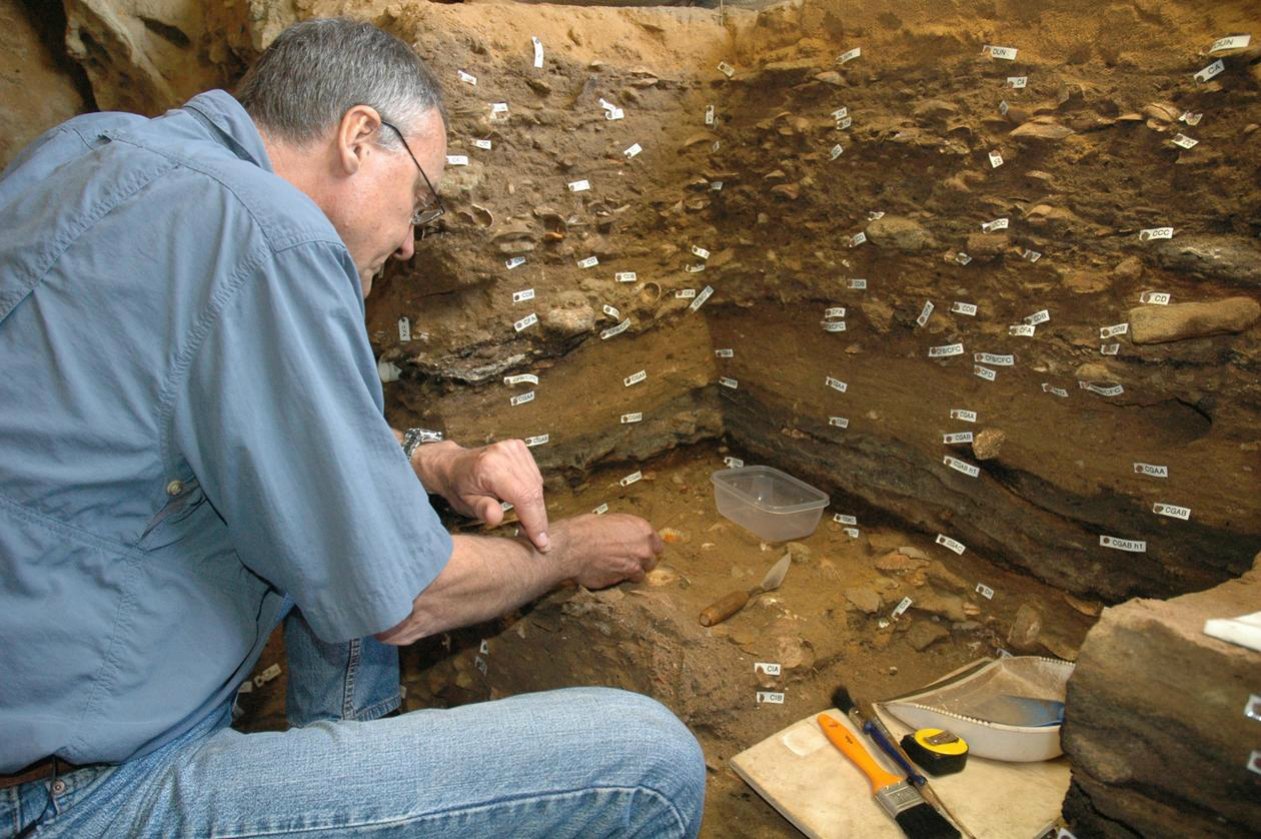
Archeologists have discovered what may be the oldest known drawing by Homo sapiens on a rock found in a South African cave. Featuring nine red strokes, researchers believe the markings, reportedly made 73,000 years ago, predate by 30,000 years the oldest previously known abstract drawings by Homo sapiens.
According to the New York Times, the tiny fragment appears to have been drawn on a flake that measures only the size of about two thumbnails and features six parallel lives that are diagonally crossed by three curved lines. The scrawls were excavated seven years ago at the Blombos Caves, which are around 200 miles east of Cape Town. It was found along with bone tools, engravings, and beads made from seashells.
Luca Pollarolo, a researcher at Johannesburg’s University of Witwatersrand and the University of Geneva, was cleaning some artifacts unearthed from the site in 2011 when he realized that there was something unusual about the small rock fragment. He described the moment to the Times, “I think I saw more than ten thousand artifacts in my life up to now, and I never saw red lines on a flake,” he recalled, “I could not believe what I had in my hands.”
Pollarolo reached out to Christopher Henshilwood, a professor at the University of Bergen in Norway, and his colleague Karen von Niekerk with news of his discovery and the trio decided to take the artifact to the lab of specialist Francesco d’Errico at the University of Bordeaux. Using a microscope, a laser, and a scanning electron microscope they determined that the marks were made using red ocher, a natural pigment that has also been found in prehistoric cave paintings.
According to the study, which was published by the journal Nature on Wednesday, the discovery could provide greater understanding of the use of symbolism and its role in the development of language, mathematics, and eventually, civilized life.
Speaking to the Times, Henshilwood, who is the study’s lead author, said “We knew a lot of things Homo sapiens could do, but we didn’t know they could do drawings back then.”
Henshilwood is certain that the markings were part of a greater picture trying to convey a message and believes “they are more than just random marks.” But his colleague Lyn Wadley, who is an archeologist at the University of Witwatersrand, disagrees. She is “not convinced of intentional drawing on the flake based on present evidence.”